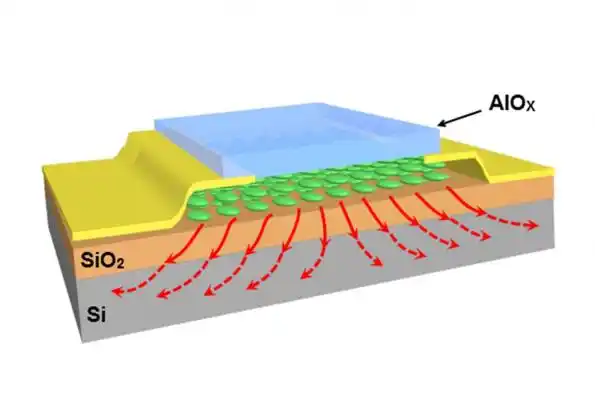افشین رشید
اُستادیار ؛ عضو هیات علمی دانشگاه آزاد اسلامی واحد علوم و تحقیقات تهران
594 یادداشت منتشر شده(Nanotransistors) The Presence of High Thermal Conductivity

Note: For the propagation and evolution of nanotransistors, the existence of high thermal conductivity for single thermal nanotubes has been theoretically demonstrated. The results of laboratory experiments also indicate the existence of this property in bulk samples of single-walled carbon nanotubes and also for single multi-walled nanotubes.
The thermal conductivity of single carbon nanotubes was measured by computational methods. One group was single-walled carbon nanotubes that were stacked together and the thermal conductivity of their set was obtained. Another group was multi-walled carbon nanotubes that were stacked separately. The thermal conductivity of this group of nanotubes was investigated individually. They obtained a thermal conductivity value of more than 0.11 mK/W for the stacks of single-walled carbon nanotubes. Also, according to , the thermal conductivity value of multi-walled carbon nanotubes individually is more than 300 mK/W.

Since the structure of carbon nanotubes for the production and propagation of nanotransistors at different temperatures has different values, it is shown as a function of temperature and in the form of (T(λ). Starting from low temperatures and gradually increasing the temperature, it is observed that the value of (T(λ)) reaches a maximum value of 111.3 mK/W near the temperature of 011 K (this maximum is seen as a peak in the graph) and then decreases with increasing temperature . The highest value of (T(λ)) observed so far in the studies is related to a specific thermal nanotube sample that was measured at a temperature of 010 K. This value is equal to 00111 mK/W. Therefore, the value of (T(λ)) of the carbon nanotube at its maximum is comparable to the highest value of (T(λ)) measured so far. According to the presented graph, even at room temperature, the thermal conductivity of the carbon nanotube is very high and equal to 0011 mK/W, in the methods of nanotransistors and nanotubes growth by synthesis of carbon nanotubes based on chemical catalytic vapor deposition (CCVD) involves the decomposition of a carbon source on small metal particles or clusters as a catalyst. This method of nanotransistor growth includes heterogeneous and homogeneous processes. The metals used for these reactions are transition metals, such as iron, cobalt, nickel. Compared to arc discharge and laser ablation, carbon nanotubes are generally formed at lower temperatures of about 011 to 0111 degrees. Generally, the selectivity of this method for the production of multi-walled carbon nanotubes is higher. Both homogeneous and heterogeneous processes are very sensitive to the nature and structure of the catalyst used in addition to the operating conditions. Carbon nanotubes produced by this method have a longer length (several tens to several hundred micrometers) and more defects compared to the arc method. The higher defects of the nanotubes are due to the use of lower temperatures compared to the arc method, which does not allow any rearrangement. It does not provide structure.
Conclusion:
For the propagation and evolution of nanotransistors, the existence of high thermal conductivity for single thermal nanotubes has been theoretically demonstrated. The results of laboratory experiments also indicate the existence of this property in bulk samples of single-walled carbon nanotubes as well as for single multi-walled nanotubes.